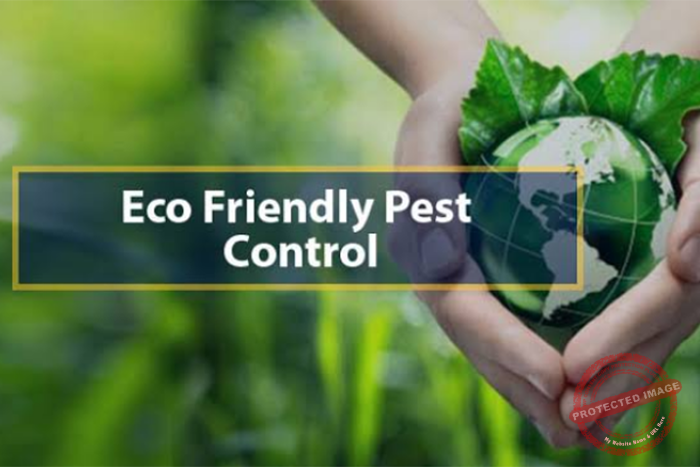If you’ve ever bitten into a ripe American persimmon on a cool autumn afternoon, you know the taste is something special. Sweet, custardy, almost like a hint of caramel. When I planted my first row of American persimmon trees on the back edge of my farm, I didn’t know what to expect. I’d heard stories of them being tough trees for wildlife and people alike, but also fussy if planted wrong. Over time, through trial and error, I learned what these native trees really like.
Farmers in the US, UK and other temperate regions often ask me if American persimmon trees shed. They do lose their leaves in autumn, and the fruit itself will drop when it’s ripe. That’s part of their charm but also something to plan for if you’re planting near walkways or patios. Knowing how they behave before you plant saves you from surprises. And once you understand their rhythm, you can turn what some see as “mess” into a harvest.
This post is my own farm grown guide to growing and caring for American persimmon trees. I’ll tell you how to choose the right site, plant the tree, care for it through the seasons, and even how to start trees from persimmon seeds. There will be a few side stories along the way so you can see what went right and what went sideways on my land. Grab a drink, settle in, and let’s dig into it.
Choosing the Right Site
American persimmon trees thrive in full sun but will tolerate some shade. If you give them at least six hours of sunlight, you’ll get better fruit and a sturdier tree. They like well drained soil but aren’t too fussy. I planted mine on a gentle slope where rainwater naturally drains away. Heavy, wet clay slowed down my first planting, so I’ve learned to give them breathing room.
Soil Preparation
Before planting, test your soil. Persimmons are forgiving but do best in slightly acidic to neutral conditions. I worked in compost and a bit of aged manure the winter before planting. It’s like setting a table before a meal. The trees come in hungrier than you’d expect, and a good soil prep pays off in stronger growth.
Planting Your Tree
I always plant in early spring while the trees are still dormant. Dig a hole twice as wide as the root ball but only as deep. Spread out the roots gently, set the tree so it’s at the same depth it was in the nursery pot, then backfill with soil. Water deeply. It’s a simple routine but it makes all the difference. A dry start stunts a persimmon for years.
Spacing and Pollination
American persimmon trees are usually either male or female. You’ll need at least one of each if you want fruit unless you’re planting a self fertile cultivar. Space trees 20 to 30 feet apart so they have room to spread. On my farm, I stagger them so the canopies don’t overlap too soon. This keeps the fruiting branches sunny and healthy.
A Relatable Scenario
I remember one spring I was in such a hurry to plant that I stuck two young persimmons too close together. By year five their branches were fighting like rival roosters. Pruning helped but the fruiting suffered. Now I measure twice, plant once, and think ahead to the full grown size. It’s one of those lessons you don’t forget.
Watering Needs
For the first couple of years, water your persimmon tree deeply once a week during dry spells. Once established, they’re fairly drought tolerant. I like to lay down a thick mulch of straw or wood chips to keep the roots cool and moist. It also cuts down on weeds. Just keep the mulch a few inches back from the trunk to avoid rot.
Fertilizing Without Overdoing It
Persimmon trees don’t need a lot of fertilizer. In fact, too much nitrogen can give you lots of leaves and few fruits. I give mine a light dose of balanced fertilizer in early spring and let the soil do the rest. If the leaves look pale or growth seems slow, a little compost tea perks them up without pushing them too hard.
Pruning for Health
Pruning isn’t complicated but it’s worth doing. In late winter, before new growth starts, remove dead or crossing branches. Open up the center to let in light. I keep the tree to a strong central leader when it’s young. A good shape now saves you ladders and headaches later when the tree is heavy with fruit.
Managing Shedding and Fruit Drop
Yes, American persimmon trees shed their leaves in autumn. They also drop fruit when it’s fully ripe. This is natural and nothing to worry about. If you’re planting near a driveway, plan to rake or collect fallen fruit. I actually like it because it signals the fruit is ready. I spread a tarp under the tree and shake the branches gently. The ripe persimmons fall into the tarp, saving me from stooping and squishing.
Starting Trees from Persimmon Seeds
If you’re patient, you can grow your own trees from persimmon seeds. Collect fully ripe fruit, scoop out the seeds, and wash them clean. They need a cold stratification period to break dormancy. I place them in moist sand inside a plastic bag in the fridge for about three months. Come spring, plant them in pots or directly in prepared soil. Not every seed will sprout, but those that do are tough and well adapted to your climate.
Common Problems and How to Handle Them
American persimmons are generally hardy and disease resistant. Still, young trees can be nibbled by deer or rabbits. I use tree guards the first few years. Leaf spots may show up in wet summers but rarely cause serious harm. The main “problem” I hear from new growers is impatience. Seed grown trees can take six to ten years to bear fruit. Grafted varieties are faster, often fruiting in three to four years.
Fertility and Fruit Quality
If you’re disappointed in your harvest, check pollination first. A lone female tree with no male nearby won’t set much fruit. Also, thinning some of the small green fruit early can lead to larger, better quality persimmons later in the season. It feels odd to pluck off baby fruit, but it works.
Harvesting Persimmons
American persimmons taste best when they’re soft and fully ripe. Pick them when they’re deep orange and almost jelly like. Some folks wait until the first frost, which can sweeten the flavor. I gently twist them off or collect them from the ground if they’ve just fallen. Wipe off any dirt and enjoy fresh or freeze the pulp for baking.
Using the Fruit
Beyond eating them out of hand, I make persimmon pudding, breads, and even a tangy BBQ sauce. The fruit stores well as pulp in the freezer. Some of my UK gardening friends make jams and chutneys. It’s a versatile crop once you get the hang of it.
FAQs About American Persimmon Trees
Do persimmon trees shed leaves?
Yes, they’re deciduous. Expect a bare tree in winter.
Can I grow persimmons in the UK?
You can in milder regions, though they may need a sheltered spot and well drained soil.
How long before a tree bears fruit?
Seed grown trees take longer. Grafted ones are quicker, often three to four years.
Can I plant persimmon seeds from store bought fruit?
You can try, but American persimmon fruit sold commercially may be from named varieties, so seedlings might not match the parent exactly. Still, it’s a fun experiment.
Do I need more than one tree for fruit?
Usually yes, unless you have a self fertile variety.
Caring Through the Seasons
Spring is for planting and fertilizing lightly. Summer is for watering young trees and watching for pests. Autumn is harvest time and a good chance to sow persimmon seeds you’ve stratified. Winter is pruning season. Following this rhythm turns persimmon care into a simple routine rather than a guessing game.
Encouraging Wildlife
American persimmons are a boon for wildlife. Birds, deer, and small mammals love the fruit. If you’re farming for profit, you might fence your orchard. If you’re planting for diversity, let some fruit fall and watch the wildlife feast. On my farm, the back edge of the persimmon grove is like a buffet for foxes and raccoons come fall.
Patience Pays Off
Persimmon trees teach patience. They grow at their own pace and fruit when they’re ready. But once established, they’re low maintenance and rewarding. A healthy tree can live for decades, feeding generations of people and animals. Think of it as planting a long term friend rather than an instant crop.
Wrapping It Up
Growing American persimmon trees isn’t complicated once you understand their needs. Choose a sunny, well drained site. Plant with care. Water and mulch while young. Prune for structure. Be patient. In time you’ll be rewarded with sweet fruit and a hardy, beautiful tree.
I still smile every time I walk through my persimmon grove and see the branches heavy with orange fruit. It feels like a little bit of autumn sunshine hanging there just for me. Are you ready to plant your own American persimmon tree and see what it brings to your farm or garden?
![How To Buy Farmland For Investment [Farmer’s Guide]](https://agrolearner.com/wp-content/uploads/2024/01/Farmland.jpg)


